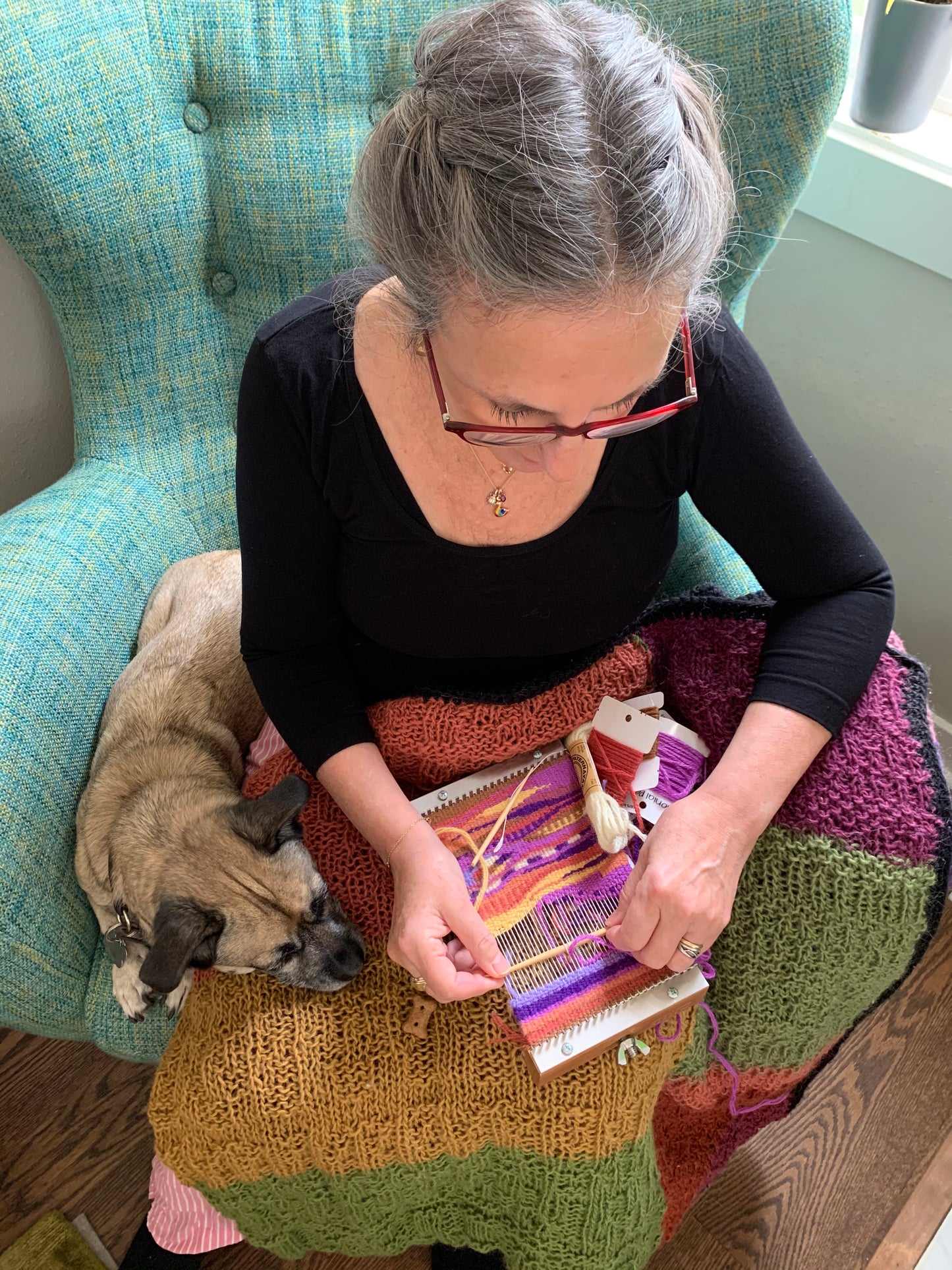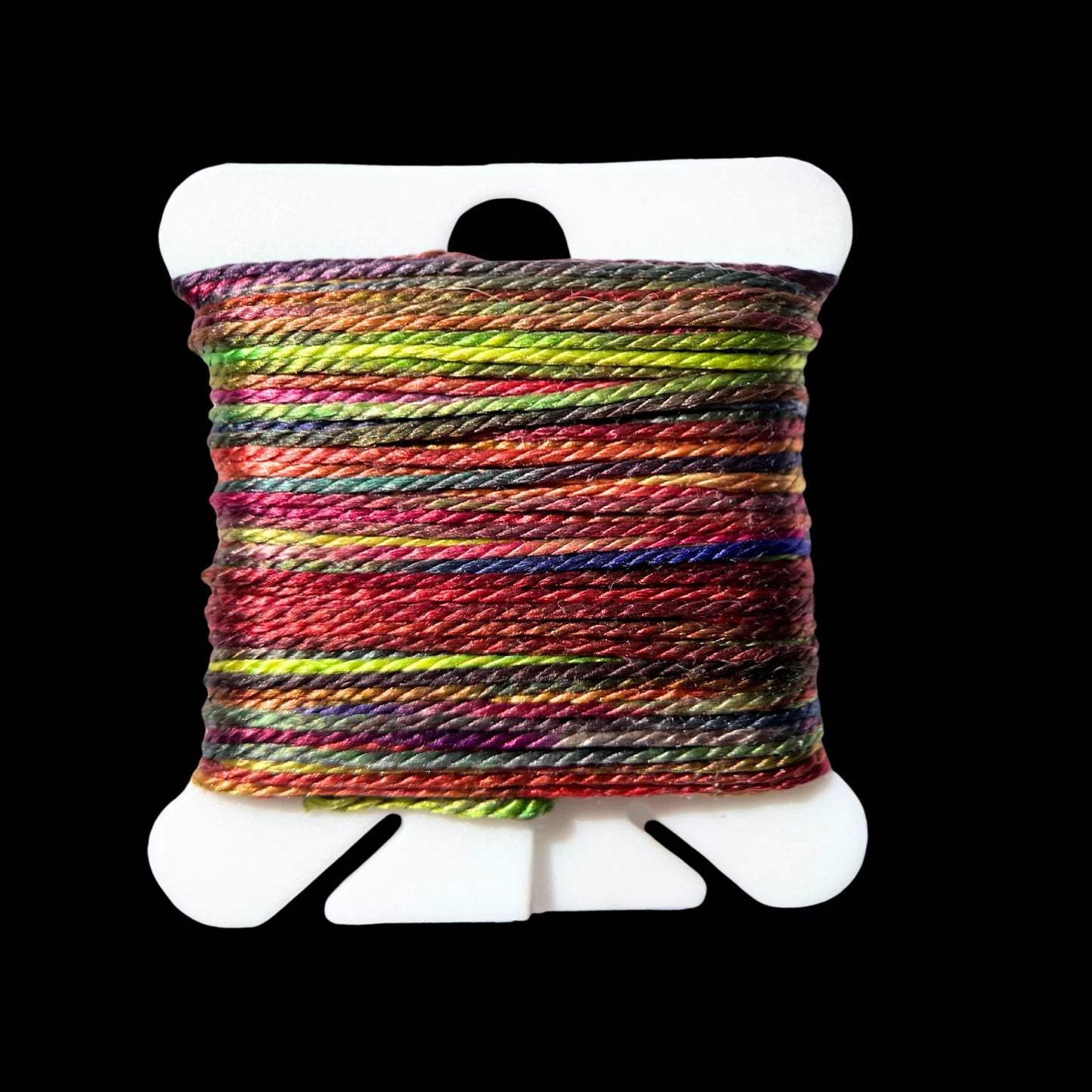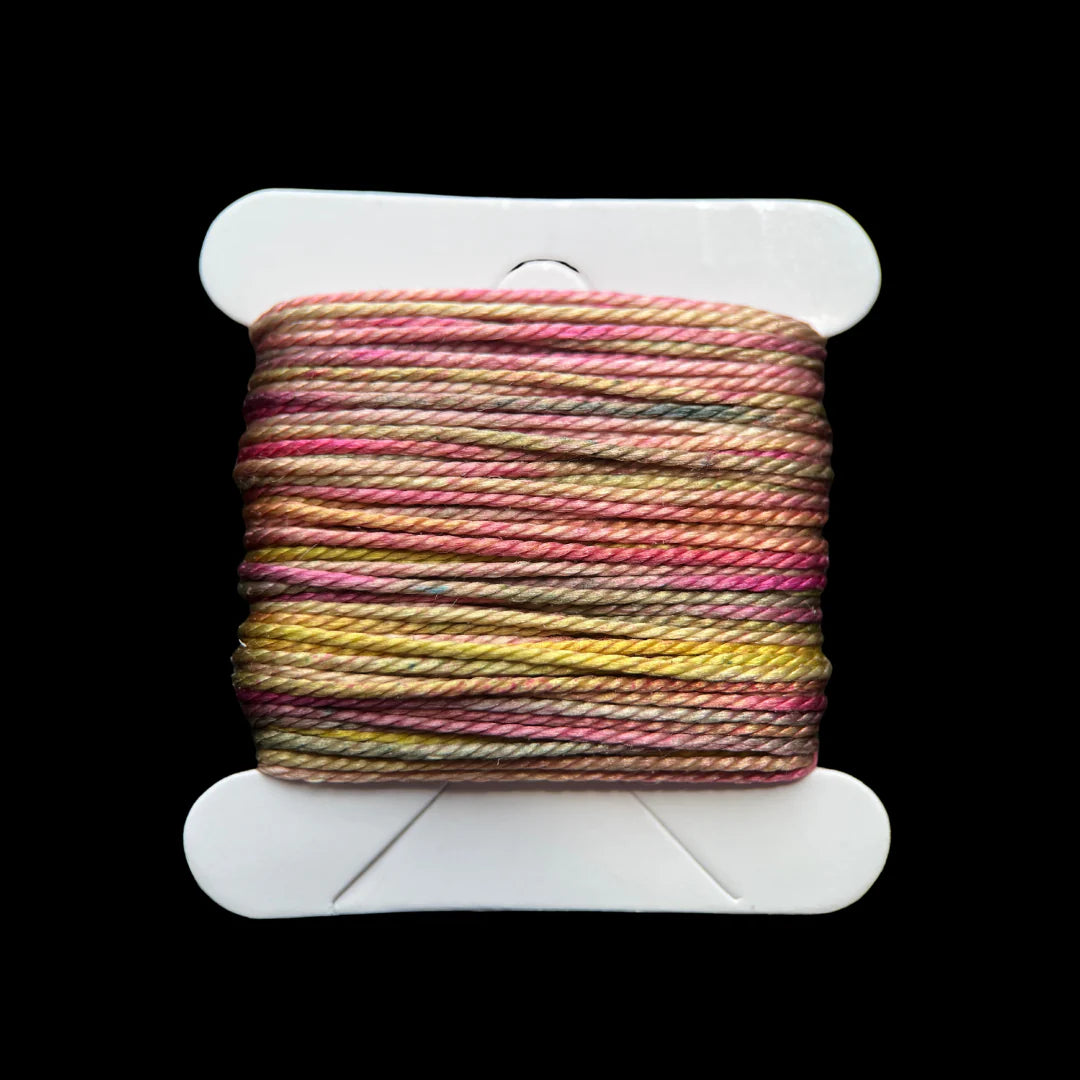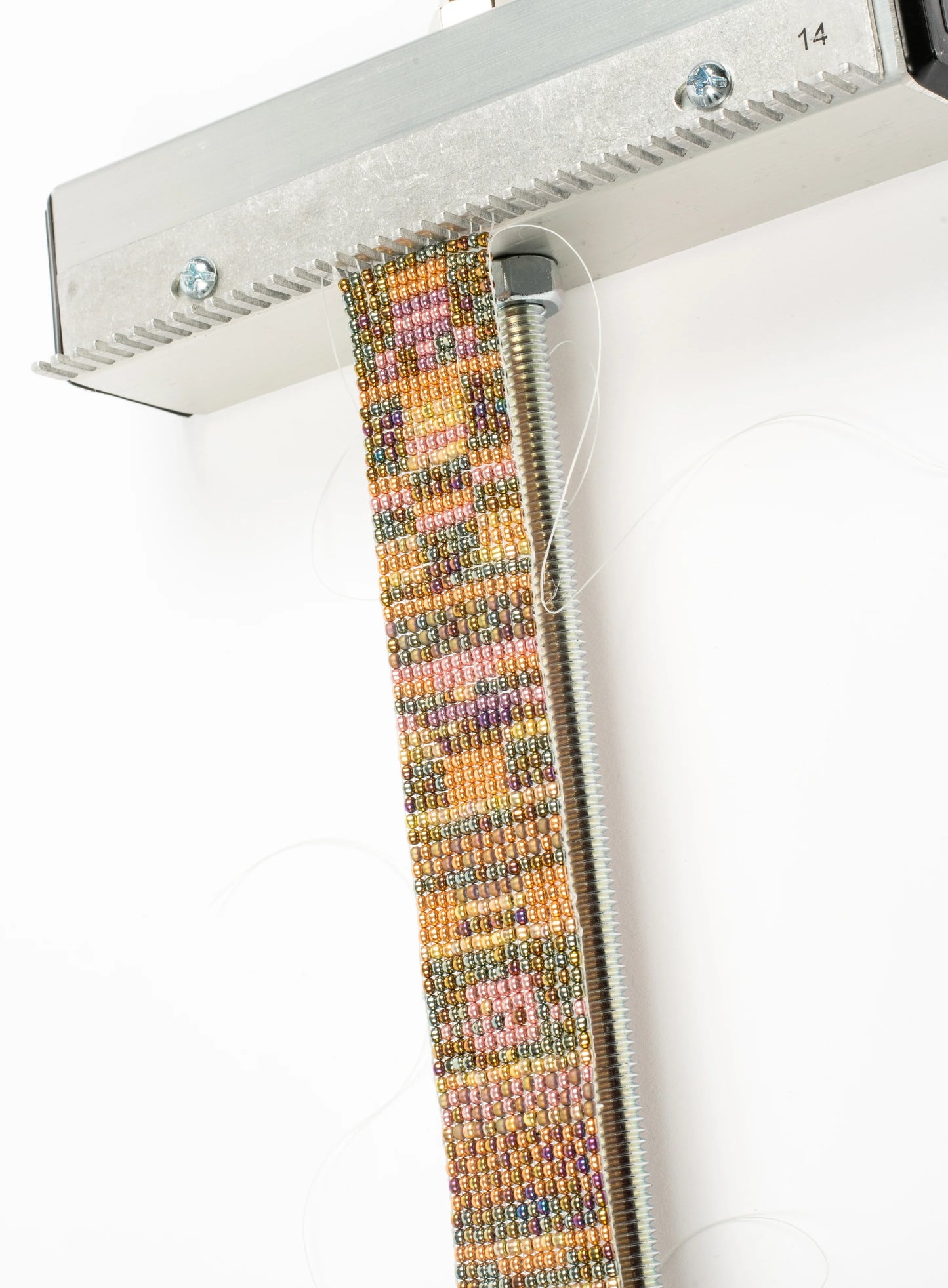
Recently a teacher I know started weaving a tapestry with her class and has come across some questions about the process as the project has developed. It made me realize that resources to help someone weave a very simple tapestry can be difficult to find. A quick Internet search reveals many tutorials that leave out important tapestry fundamentals which would likely leave the reader with more questions than answers and result in a less-than-perfect final project. On the other hand, there are many wonderful tapestry resources out there that might seem a bit intimidating for someone just looking to make a one-off basic-but-pretty wall-hanging.
This post provides some fundamental information about weaving tapestry and highlights a few important things that are critical to understand as a beginner. I hope it is helpful for anyone looking to dip their toes into the world of tapestry, even if just for a moment. Who knows? You may just end up falling in love with the art of tapestry weaving!
What is tapestry?
Someone uninitiated into the world of weaving might not know that the wall-hanging they are trying to weave is even called tapestry. That can make finding resources difficult. Tapestry is a type of weaving that is weft-faced. This means the weft (running horizontally on the loom) shows in the final product and the warp (running vertically on the loom) does not. Tapestry tends to be pictorial (although not always) and is usually not woven selvedge (edge) to selvedge. Here is a list of some tapestry definitions. Generally, the type of wall-hanging you'd make in a school setting would be loosely considered tapestry weaving.
What is important in a loom?
I am obviously biased, but a good loom is a really important tool if you want to weave a high-quality tapestry. Yes, you can absolutely weave on a picture frame or a "school loom" but you're going to get better results with a better loom. The most important quality in a tapestry loom? An on-loom tensioning device. If you've ever tried to warp a loom without one, you'll agree. Tight warp tension is paramount to weaving a good tapestry and getting good tension without a device on the loom to tighten it after you've warped can be difficult, especially for a beginner. All Mirrix Looms have on-loom tensioning devices, even our less-expensive Pocket Loom line. (If you're looking for a relatively inexpensive, easy-to-warp loom, our Chloe Pocket Loom is wonderful for beginners and professionals alike.)
Sett
You decide to weave a tapestry. You find some warp. You find some yarn for weft. You warp, you weave.... Except for some reason you can see your warp threads through your weft and it's getting hard to push down your weft in places. Or there is a ton of weft between each of your warp threads so the piece doesn't seem to hold its shape. Your problem is sett, which is the spacing of your warp threads. Some basic frame looms only allow you to weave at one sett (our Chloe Pocket Loom is an exception as are all of our Classic Series Looms) so you have to make sure that the warp and weft combination you are using work well with that sett.
You can learn more about sett here.
How to weave with straight edges
The first problem most new tapestry weavers come up against is what we call "pulling in", where suddenly your piece begins to look like an hourglass instead of a rectangle.
This blog post has some great tips to prevent pulling-in.
How (and where) to start and end threads
Ever see a weaving where each weft was ended on the edge of the piece and is therefore visible? While you absolutely do not have to weave-in your ends, it is best to start and end your threads either in the middle of the piece or with what is called a pigtail on the edge.
Learn more about starting and ending threads here.
How to weave stripes
If you read the Prevent Pulling In blog post, you know stripes aren't ideal when weaving tapestry, but stripes are often a go-to motif for new weavers and eliminate the need to learn some more complex techniques and skills (like weaving in opposite directions.)
One of our free projects, The Martha Table Runner, has some great tips on how to make stripes work.
Our Tiny Tapestries Tutorial is also a great one. It shows you how to weave two very simple little tapestries.
Starting and ending a tapestry
There are few things worse than taking a tapestry off of the loom and it falling apart. All that work! What happened? Likely, you didn't take precautions to properly start and end your tapestry.
This blog post will help you learn how to correctly start and end a tapestry!
Mirrix projects
If you're looking to learn more about tapestry weaving, we recommend checking out some of our free projects and tutorials. They're not the simplest projects in the world, but they are almost all good for beginners and will teach you some of the fundamentals of tapestry (and bead weaving.)
Good luck and happy weaving!






